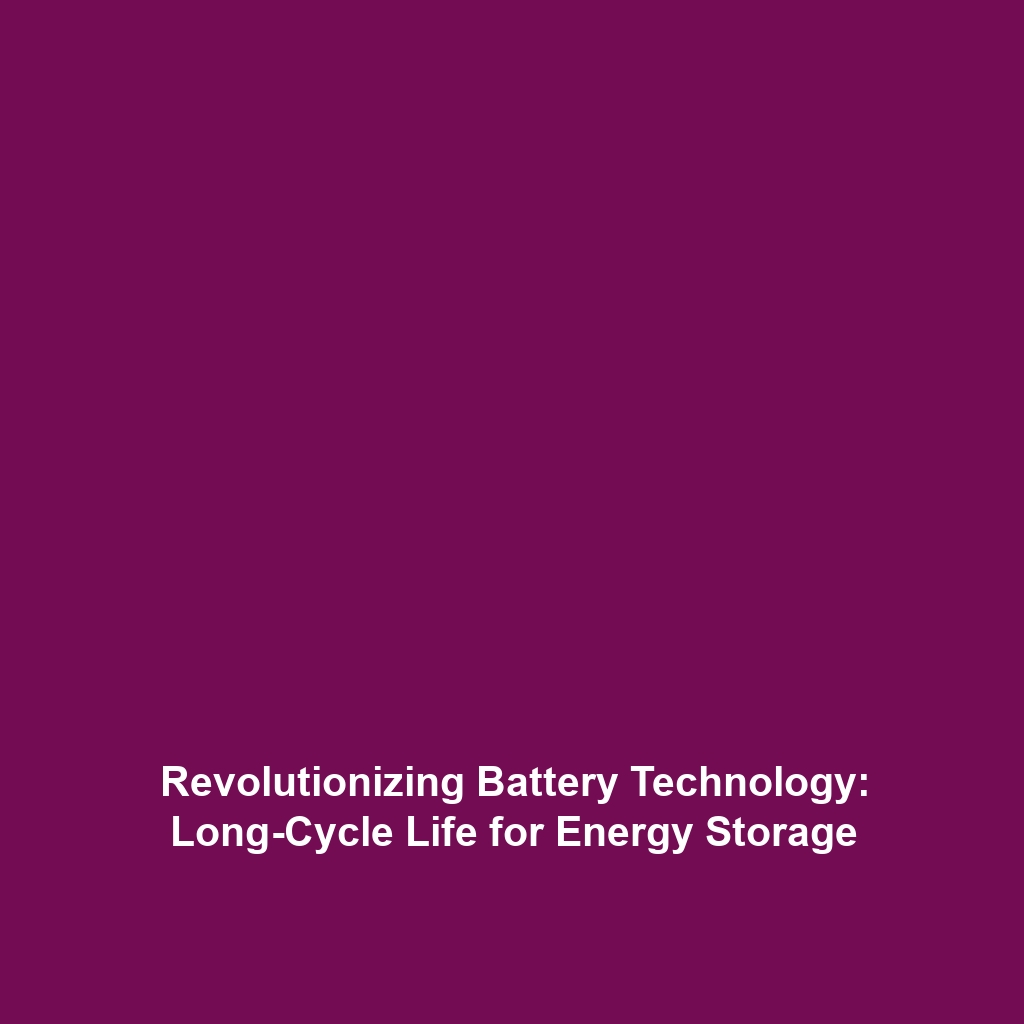Battery Technology: Ideal Solutions for Grid Energy Storage
Introduction
In recent years, the demand for reliable and efficient energy storage solutions has surged, particularly due to the rapid growth of renewable energy sources like solar and wind. Advanced battery technologies have emerged as ideal candidates for grid energy storage, primarily owing to their long cycle life and the capability to decouple energy and power capacities. This article examines their significance within the broader context of battery technology, highlighting how these innovations can enhance the stability of energy networks and promote the integration of renewable energy.
Key Concepts
Understanding the principles behind advanced battery technology is vital for its application in grid energy storage. Here are some key concepts:
Long Cycle Life
Batteries exhibiting a long cycle life can undergo numerous charging and discharging cycles without significant degradation. This quality ensures that they remain efficient and advantageous for long-term energy storage needs.
Decoupling of Energy and Power Capacities
The ability to decouple energy and power allows these battery systems to efficiently handle energy storage and power delivery independently, making them versatile for various applications within battery technology.
Applications and Real-World Uses
The applications of advanced battery technologies in grid energy storage are both broad and significant. Here are notable examples highlighting how these technologies are utilized:
- Renewable Energy Integration: Utilizing batteries to store surplus energy generated during peak production hours, ensuring the energy is available during high-demand periods.
- Grid Stabilization: Advanced batteries play a critical role in stabilizing the grid by providing backup power during outages and helping to balance supply and demand.
- Microgrid Systems: They enable effective energy management in isolated grids, providing necessary energy during periods without direct renewable generation.
Current Challenges
Despite their potential, several challenges exist surrounding the implementation of these battery technologies:
- Cost: High initial capital costs can deter adoption and investment in advanced battery solutions.
- Technical Limitations: Issues related to energy density, efficiency, and life span still present barriers to widespread implementation.
- Environmental Concerns: The production and disposal of batteries pose significant environmental risks that need to be addressed.
Future Research and Innovations
Ongoing research is poised to unlock the full potential of advanced battery technologies, with innovations that may significantly impact future energy solutions. Some areas of focus include:
- Development of solid-state batteries, which promise greater safety and energy density.
- Advancements in battery recycling techniques to minimize environmental impact.
- Integration of AI in monitoring and optimizing battery performance for smarter energy management.
Conclusion
In summary, advanced battery technologies present ideal solutions for grid energy storage applications, characterized by their long cycle life and unique capability to decouple energy and power capacities. As we look to the future, urging further research and innovation is paramount to overcoming current challenges and ensuring a sustainable energy landscape. For more insight into battery technology, consider exploring our related articles on energy storage solutions and renewable energy systems.

